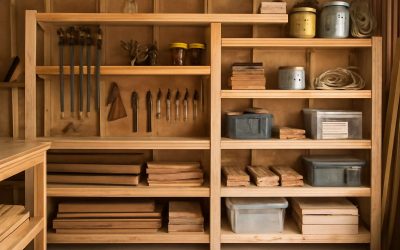
Warehouse racking and shelving are the backbone of any warehouse or distribution center. They help keep products organized and accessible, and allow your workers to move quickly from one rack to another. They also save time and prevent traffic jams, which can lead to accidents or lower productivity.
Warehouse Organization
An organized warehouse environment promotes efficiency, and helps ensure safety and a pleasant work environment for all your employees. An organized floor plan makes it easier for your team to find supplies, and reduces waste. Organizing your facility can also improve your bottom line by helping to increase employee satisfaction and lowering maintenance and service costs.
High-Density Shelving and Racking Systems
If you have a large warehouse, or an upcoming expansion, you may need to consider investing in storage systems that can accommodate heavy materials like lumber and pipes. The best warehouse shelving options are the ones that are able to support these loads without breaking or bending, and minimizing the risk of damage to stored items.
Widespan Shelving and Bins
If your warehouse is large and you store a lot of heavy-duty, long-lasting goods, you’ll need widespan shelving and bins to maximize vertical space. These shelving units are great for storing bulky objects that require high-density storage, and can often hold up to 2,000 pounds of load on each shelf.
Shelving Frames and Beams
Shelving frames come in a variety of styles, and you should choose the style that best suits your needs. The most common are pallet racking uprights and industrial stack rack frames. However, if you need to store longer items, you might want to choose cantilever shelves or a pallet racking beam.
The most important part of a warehouse shelving system is the racking itself, and there are many factors that determine how well it will perform. A poorly designed system can waste space and lead to low inventory levels, which will affect your business’ bottom line.
Optimizing Your Warehouse Shelving
The first step to optimizing your warehouse shelving is to calculate its storage capacity. The simplest way to do this is to divide your total warehouse storage area into logical sections like rows and floor stack areas. Then, estimate the percentage of each section that is currently in use and multiply that number by your maximum storage capacity (step 2).
This gives you your Inventory Cube. Using this cube, you can then calculate how much storage space is unused and determine whether your warehouse needs additional storage.
A good Inventory Cube can help you to identify storage areas that need improvement and can allow you to plan your future warehouse layout accordingly. It will also allow you to determine if you need more racks, as well as help you prioritize and implement any improvements that need to be made.
Selective Pallet Racking
The most popular type of warehouse racking, selective pallet racking is perfect for picking and packing operations. This system has an open front to allow your workers to select the products and pallets that they need, and an enclosed back to protect them from dust and light.



0 Comments